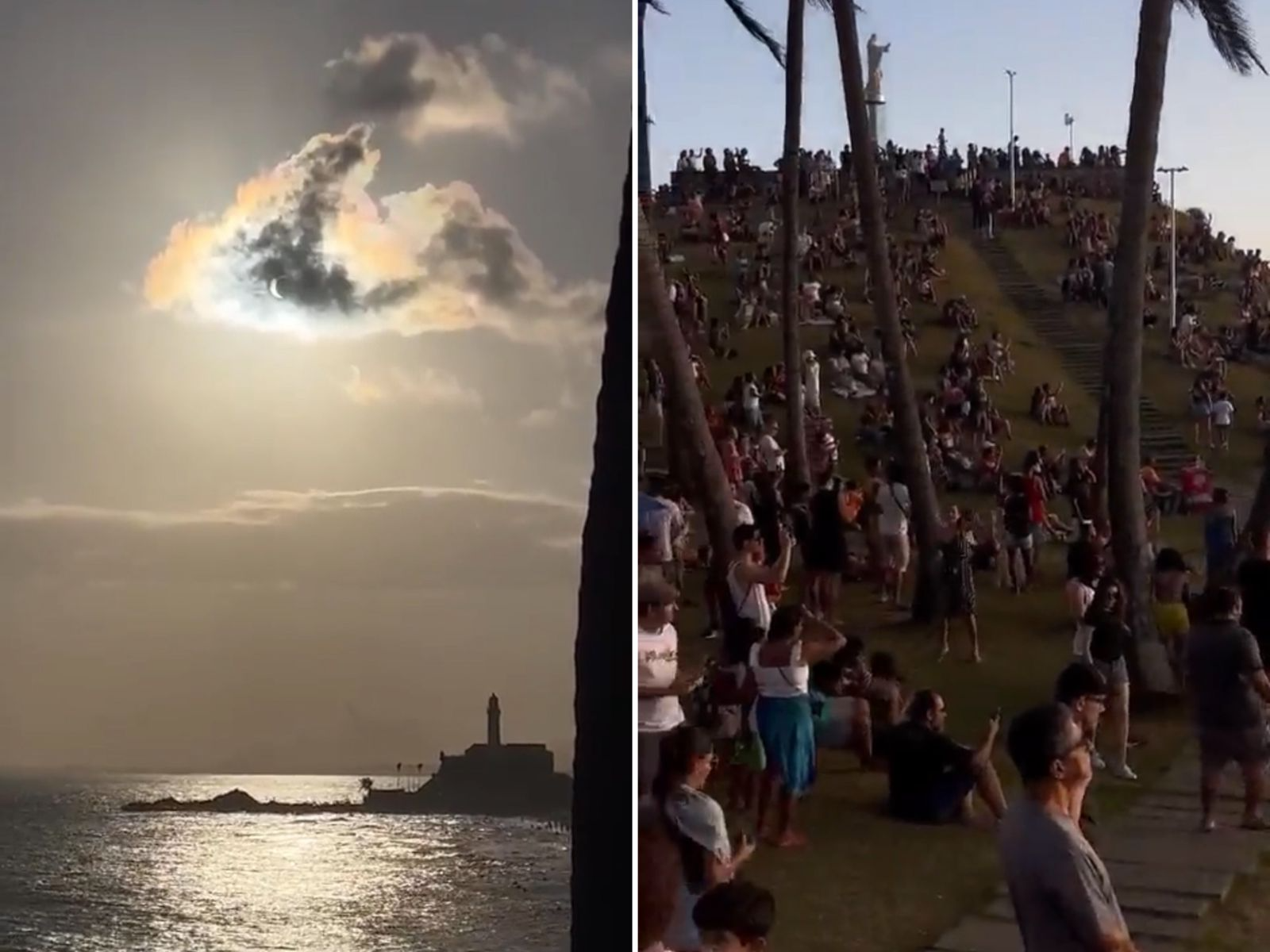The annular solar eclipse was seen this Saturday, October 14, at Farol da Barra, in Salvador. At the time, at around 4:48 pm, the moon covered most of the solar disk, leaving only a bright ring at the edge.
“An annular eclipse occurs when the Moon, as seen from Earth, appears smaller than the Sun [no céu]. Thus, the Moon does not completely cover the solar disk, leaving a luminous ring around the moon’s contour, hence the reason for the name ‘annular eclipse’”, explained doctor in Astrophysics Leonardo Almeida, professor at the School of Science and Technology (ECT) at Federal University of Rio Grande do Norte (UFRN).
The phenomenon is different from a total eclipse, when the moon completely covers the solar disk, leaving only the solar corona visible. The National Observatory points out that the annular eclipse occurs when the moon is at its apogee, the furthest point in its orbit from the Earth, and at that moment the Moon appears smaller, which allows this ring to be visible in the eclipse.
Almeida points out that this difference is due to the fact that the moon’s orbit around the Earth is not circular, which means that the distance between them varies throughout the Moon’s translation period.


